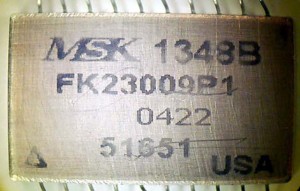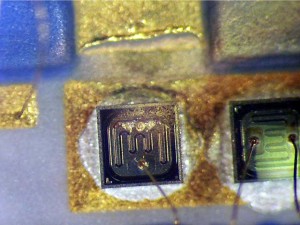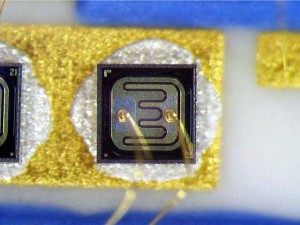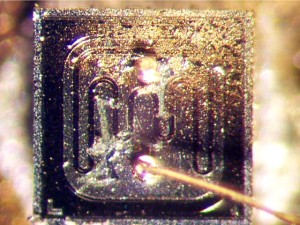Linear Microcircuit Modular Hybrid
Gideon Analytical Laboratories received one linear microcircuit modular hybrid FK23009 for electronic failure analysis. A hybrid integrated circuit (HIC) is a miniaturized electronic circuit constructed of individual devices, such as semiconductors and passive components like resistors or inductors, and typically encapsulated in epoxy. The hybrid microcircuit is used in military and communications applications and is excellent for creating custom analog circuits, such as amplifiers and modulators. Thick film technology is often used as the interconnecting medium for hybrid integrated circuits. The modular hybrid FK23009 had no output on lead 1. The goal was to perform electronic failure analysis and discover the reason why it failed.
The modular hybrid FK23009 was decapsulated and analyzed. Examination revealed that extreme current cause the emitter wire to overheat the transistor die and fuse the junctions, melting both the silicon and the wire. The current entered the collector rail via output pin 1 and mad a complete circuit via the emitter rail from the silicon controlled rectifier (SCR) drive. There was no damage to the base wire, or elsewhere. The output lead 1 became the input of a current surge from the silicon controlled rectifier.
Gideon Analytical Laboratories is one of the preeminent electronic failure analysis laboratories in the United States. Over the past few decades, we have save companies in the electronics industry millions of dollars. Failures cost money, time, and embarrassment. Stop failures in the future by finding out exactly why and how they happen. Gideon Analytical Laboratories is here to help. If you are in need of electronic failure analysis, be sure to give Gideon Analytical Laboratories a call.

FK23009P1 hybrid circuit

extreme current, overheat on wire

transistor with base to emitter contacts

no damage to the base wire